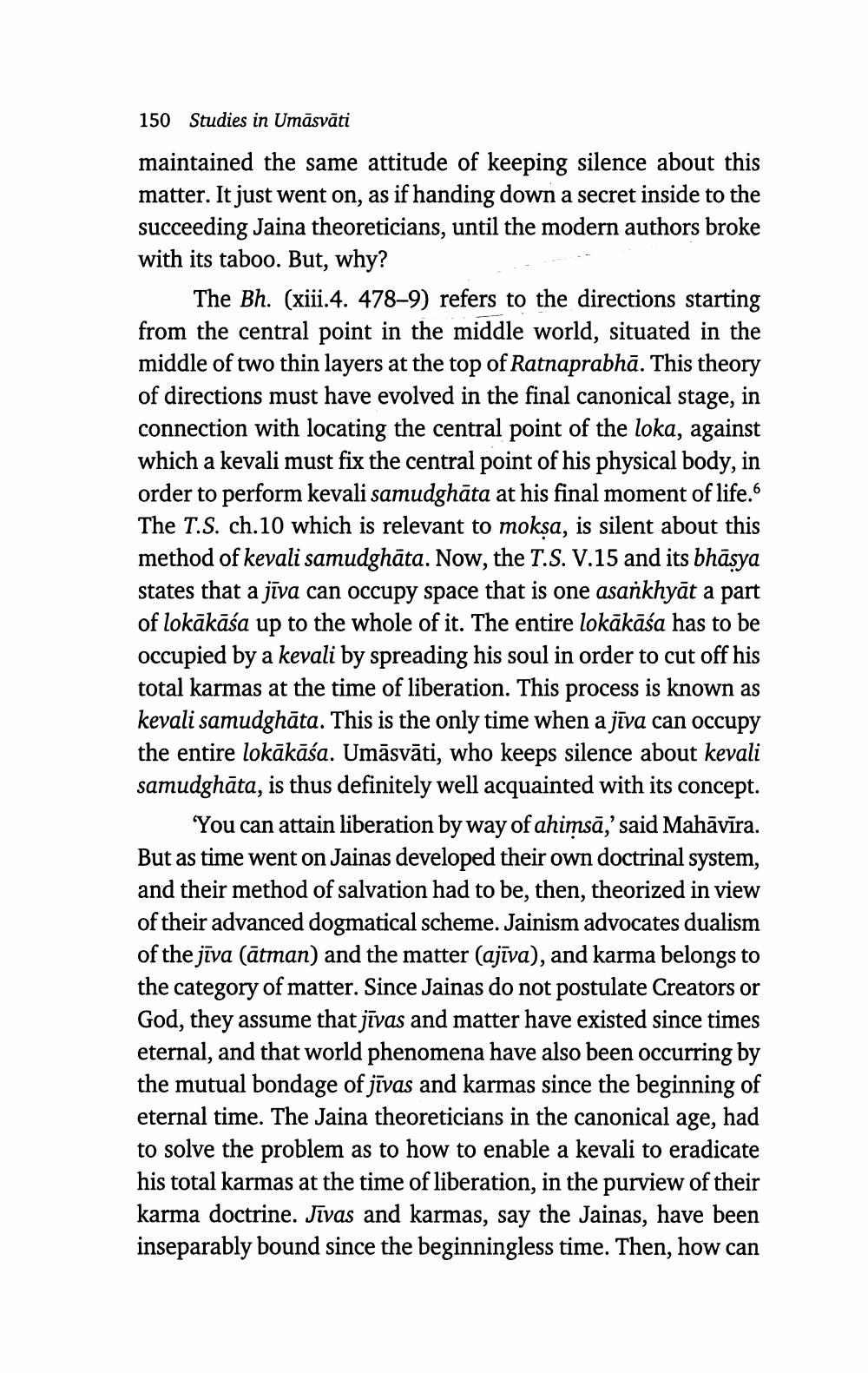________________
150
Studies in Umāsvāti
maintained the same attitude of keeping silence about this matter. It just went on, as if handing down a secret inside to the succeeding Jaina theoreticians, until the modern authors broke with its taboo. But, why?
The Bh. (xiii.4. 478-9) refers to the directions starting from the central point in the middle world, situated in the middle of two thin layers at the top of Ratnaprabhā. This theory of directions must have evolved in the final canonical stage, in connection with locating the central point of the loka, against which a kevali must fix the central point of his physical body, in order to perform kevali samudghāta at his final moment of life.6 The T.S. ch.10 which is relevant to mokṣa, is silent about this method of kevali samudghāta. Now, the T.S. V.15 and its bhāsya states that a jīva can occupy space that is one asankhyāt a part of lokākāśa up to the whole of it. The entire lokākāśa has to be occupied by a kevali by spreading his soul in order to cut off his total karmas at the time of liberation. This process is known as kevali samudghāta. This is the only time when a jīva can occupy the entire lokākāśa. Umāsvāti, who keeps silence about kevali samudghāta, is thus definitely well acquainted with its concept.
You can attain liberation by way of ahimsā,' said Mahāvīra. But as time went on Jainas developed their own doctrinal system, and their method of salvation had to be, then, theorized in view of their advanced dogmatical scheme. Jainism advocates dualism of the jīva (ātman) and the matter (ajīva), and karma belongs to the category of matter. Since Jainas do not postulate Creators or God, they assume that jīvas and matter have existed since times eternal, and that world phenomena have also been occurring by the mutual bondage of jīvas and karmas since the beginning of eternal time. The Jaina theoreticians in the canonical age, had to solve the problem as to how to enable a kevali to eradicate his total karmas at the time of liberation, in the purview of their karma doctrine. Jivas and karmas, say the Jainas, have been inseparably bound since the beginningless time. Then, how can




